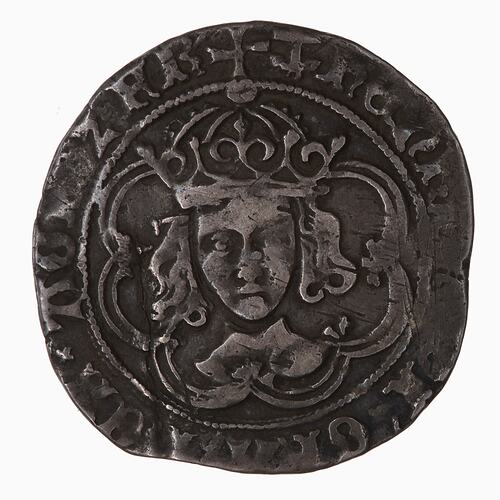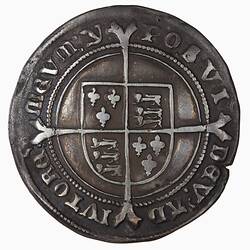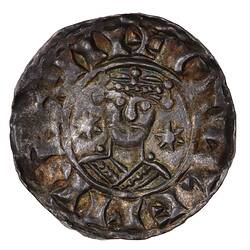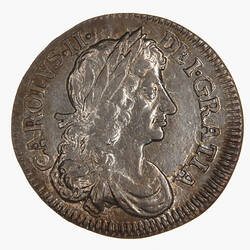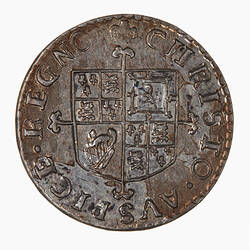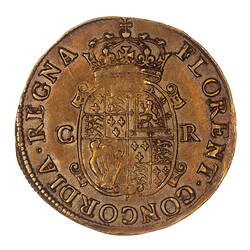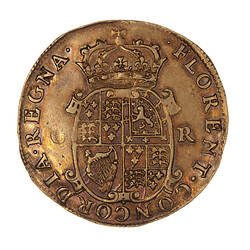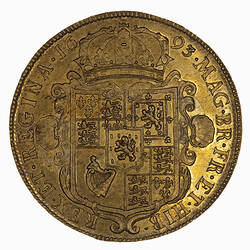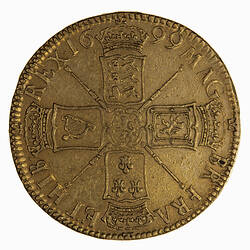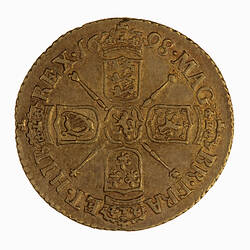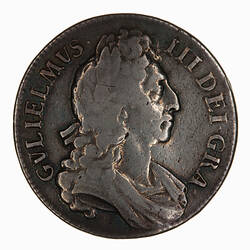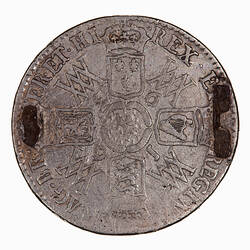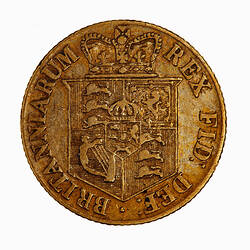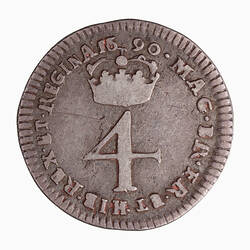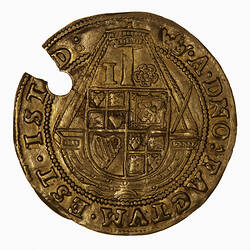In 1279 William de Turnemire was appointed master-moneyer for England. He had come from France with a new approach to casting the molten metal - in strips rather than sheets, and boiled the blanks in acid to improve their silvery surface. The Royal Mint was at the time in the Treasury and Exchequer buildings but becoming large and industrial.
In 1300 it was moved within the Tower of London into a 400 feet long purpose built mint facility between the inner and outer walls of the Tower. By the middle of the century almost all minting in England was done there. By that time the Royal Mint was producing coins in both gold and silver, their value being tied to the amount of metal they contained.
The old role of moneyer was evolving into the Company of Moneyers who claimed the sole right of striking coins. However the quantities of bullion to be coined and the arrangement for the actual coining were now a matter between the King and the Master of the Mint.
At the beginning of the 16th Century the influence of the European Renaissance found their way onto British coinage. Beginning in the reign of Henry VII the King's portrait was a real likeness rather than a conventional image. This was achieved by the engraver modelling the effigy in relief, as it would appear on the eventual coin, in steel. This relief image was then hardened and used to make the working dies to which the legend was added by hand.
By the 1550s ecclesiastic mints were discontinued and regional mints only resorted to in times of special need. In Europe the age-old technique of striking the coins with a hand held hammer was being challenged by a screw press and horse drawn mills were being employed for preparing the metal. The result was rounder, thicker and more consistent coinage. This had a great advantage over the old hammered coins as it made it more difficult to cut small pieces of silver or gold from the edges of the coins and then put them back into circulation, a widespread practice called clipping.
The Royal Mint followed the Paris Mint in its early experiments with the new techniques. In 1561 Eloy Mestrell came to London from Paris and was funded by the Royal Mint to set up a mill and screw press. Interest in the effort was so great that Queen Elizabeth visited the Tower to examine the work in July that year. The coins were better produced but the technique was slower and was rejected by the Company of Moneyers. A second attempt was made in 1625 when another Frenchman, Nicholas Briot, came to London. His efforts too were rejected but he was sent to Scotland to work at the Edinburgh Mint with eventual success.
Finally in 1651 a third French engineer, Pierre Blondeau was brought to London. Charles I had been executed in 1649. The Mint had been taken over by the Commonwealth of England when he had fled London and was still using the hammered method of production. Under Oliver Cromwell, Blondeau the engineer and Thomas Simon the die engraver produced a series of coins of exceptional quality employing a screw press. The Restoration of Charles II saw a return to hammering for a short time but the poor state of the coinage required attention. Charles II recalled Blondeau from Paris and sent for the Roettier brothers, engravers from the Netherlands to establish a new machine struck coinage from 1662.
In 1666 charges for coinage were abolished. From that time one could take bullion to the mint and have it struck into coins and returned full weight. The coins were struck in silver and gold with their value fixed by the metal which they contained. Charles II's new gold coins were called guineas. At first the guinea was worth 20 silver shillings but this went up as high as 30 before eventually being set at 21 shillings. The fixed denomination ratio eventually led, in the 18th century, to no silver being brought to the mint, it being more valuable as bullion than as coin.
In 1696 the Royal Mint was charged with re-coining all the old silver in circulation in Great Britain. This included large amounts of hammered silver, much of it now very worn and clipped. Although now working with good mills and screw presses this task was too great for the single mint.
Branch mints were therefore established at Bristol, Chester, Exeter, Norwich and York, the product from each being distinguished by the addition of a mint mark in the form of the first letter of the name if the city where the mint was operating; coins with a B were from Bristol etc. In addition, coins made from freshly mined silver were marked to indicate where the silver came from, roses on the reverse indicated silver from mines in the West of England while plumes indicated Welsh mines.
The Royal Mint was not responsible for the production of small denomination base metal coins until 1672. Prior to that, small change was struck in silver, like the tiny farthing (quarter penny) of Henry VIII, or were made by the people by cutting penny coins into halves and quarters. Later merchants had their own tokens made and private individuals were sold a Royal patent to strike and circulate farthings. From 1672 copper farthings and halfpennies were struck.
After the Union with Scotland in 1707 the Royal Mint was joined for a short time by the Edinburgh Mint in producing coins for Great Britain but there was not enough work for the two mints after the initial call for coinage for Scotland and the Royal Mint continued alone.
The end of the 18th Century saw new technological developments effecting coin production outside the Royal Mint. This time Matthew Boulton and James Watt conspired to employ steam power to drive both the mills and the presses of their Soho Mint. In 1797 they received a contract to strike copper penny and twopence coins, the Royal Mint was unable and the Moneyers unwilling to produce enough small change to supply the needs of the Industrial Revolution.
The early 1790's are renowned for the numbers of private firms that had copper tokens produced to meet that need. The results the Soho Mint achieved convinced authorities that new facilities were needed for the Royal Mint. The public response to the new copper coins was less enthusiastic. They were far too large and cumbersome - a large number of the penny coins were sent to the prison colony of New South Wales in 1799 serving in Sydney as twopence.
References
The Royal Mint, An Outline History, London 1977
Dyer, G.P. Royal Sovereign 1489-1989, Royal Mint Publications, London 1989
Cooper, Denis R. The Art and Craft of Coinmaking, Spink & Sons, London, 1988
Annual Reports of the Royal Mint
Challis, C. E., A New History of The Royal Mint, Cambridge University Press, 1992 http://www.royalmint.com/Corporate/History/TheRoyalMint/llantrisant.aspx
More Information
-
Keywords
-
Authors
-
Article types
